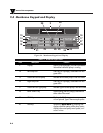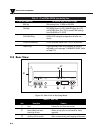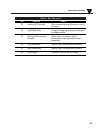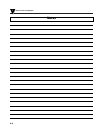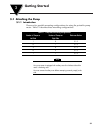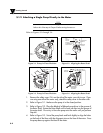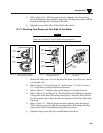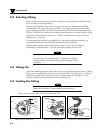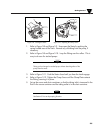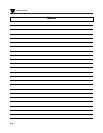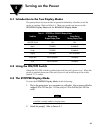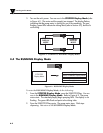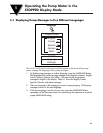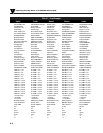
3.2 Selecting Tubing
Select a tubing material and size that is right for your application (the fluid and
flow rate that you are pumping).
Table 9-2 in Chapter 9, shows the average flow rates for different size tubing.
Normalized flow rates (mL per revolution) vary significantly, based on motor
speed, tubing materials, viscosity, and mechanical tolerances in pump dimensions.
Table 9-3 outlines the variances resulting from differences in motor speed, tubing
materials, and mechanical tolerances. Table 9-6 outlines the variances due to
differences in viscosity.
To determine the chemical compatibility of a particular tubing material, it is
recommended that you test the tubing under actual conditions.
Tubing materials that can be used include Vinyl, Viton, Tygon, Silicone,
Santoprene, and Norprene. Up to 68 durometer tubing can be used.
Poor tubing life results were obtained for
5
⁄16" (8.0mm) inner diameter
Santoprene tubing. This particular tubing should not be used with the
pump motor.
3.3 Tubing Life
Over time and high speeds, flow rates will drop as the tubing wears out. Tubing
life for various materials and sizes are shown in Table 9-4 in Chapter 9. Tubing
should be periodically inspected for wear. Either move the tubing to a fresh
section, or replace tubing entirely (refer to Section 3.4).
3.4 Loading the Tubing
Perform ALL of the steps in Chapter 3 before turning the motor on.
Follow this procedure (refer to Figures 3-8 through 3-12):
Figure 3-8. Parts of the Pump Figure 3-9. Opening the Stator Figure 3-10. Loading the Tubing
Clamp
Screw
Stator
Latch
Tubing
Clamp
Plate
Getting Started
3
3-4
NOTE
CAUTION



